How to Learn to Distinguish Bees, Wasps, and Bumblebees
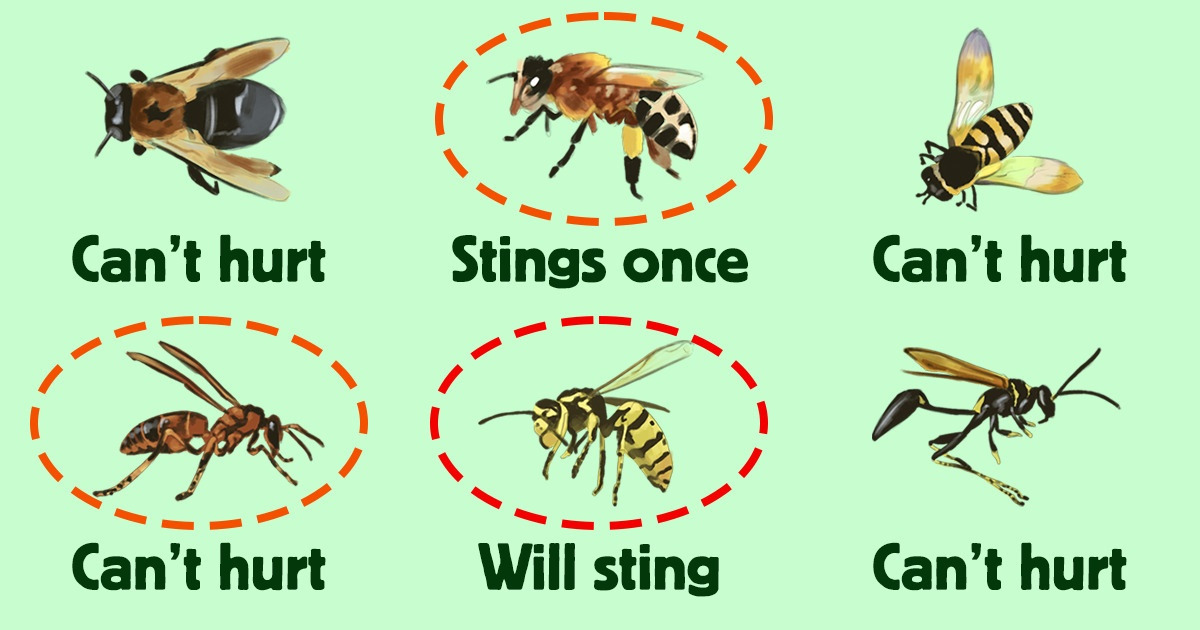
Bees, wasps, and bumblebees are winged insects that are often mistaken because of their similar colors. However, there are many more differences between them if you take a closer look.
5-Minute Crafts collected interesting facts about bees, wasps, and bumblebees that will help you stop mixing these insects up once and for good.
What are their similarities?
- Bees, wasps, and bumblebees belong to the same family, Hymenoptera.
- Most types of bees, wasps, and bumblebees have a clear hierarchical structure and division of labor.
- All 3 types of insects can sting, however, the insects themselves will have different consequences from this action.
- Wasps, bees, and bumblebees have similar colors, but when examined in detail, they differ significantly.
Those are all the similarities between bees, bumblebees, and wasps. Now let’s go to the differences between them which exceed the similarities.
Appearance
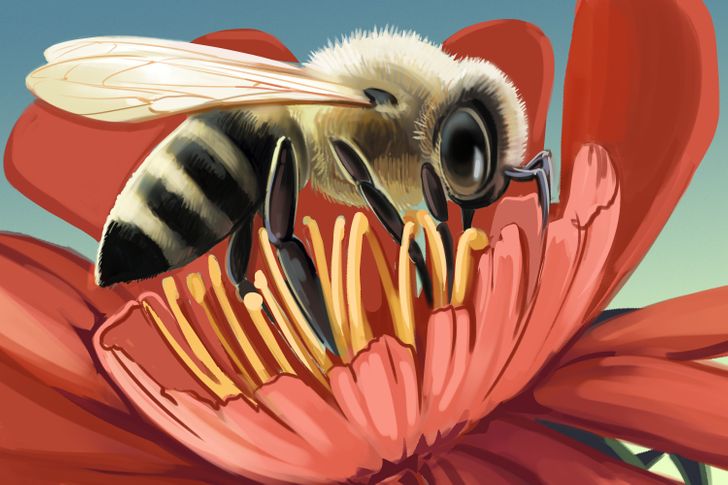
- If you look closely, you will notice that the body of the honey bee is often brownish, as opposed to the black and yellow coloration of the bumblebee and wasp. Just like a bumblebee, a bee is covered with fine hairs, which makes it look moderately fluffy but not as hairy as a bumblebee, and not as smooth as a wasp.
The bee has a rounder belly than a wasp and thicker, shaggy legs. The stinger of a bee has tiny notches at the end, which prevent it from being removed from the body of the person it stings. However, after using this means of protection, the bee itself becomes a victim because it loses part of its digestive tract along with the stinger, and dies soon afterward. For this reason, bees rarely show their aggression and use their stinger mainly for self-defense or to protect their hive.
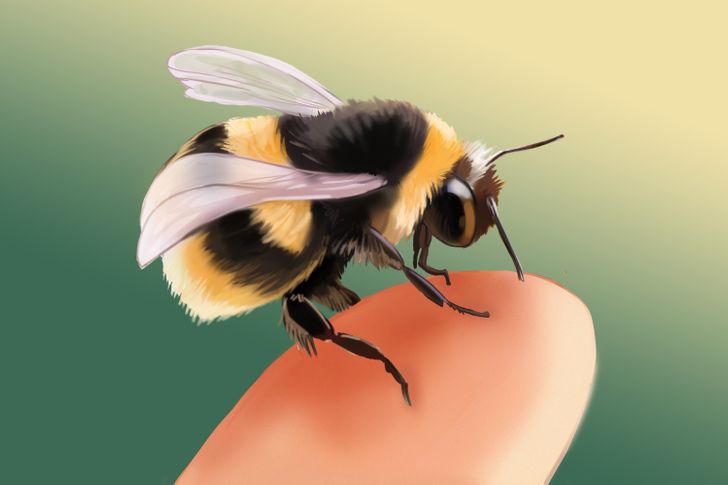
- Normally, a bumblebee is twice as big as a honey bee. Its body is covered with thin shaggy hairs, which makes the bumblebee seem more fluffy and voluminous. The coloring of a bumblebee is more similar to a wasp than a bee. It also often has black and yellow stripes on its body. Some species can be completely black or include bright yellow, red, white, and pink colors.
Unlike the honey bee, the bumblebee has a smooth stinger and can reuse it if necessary.
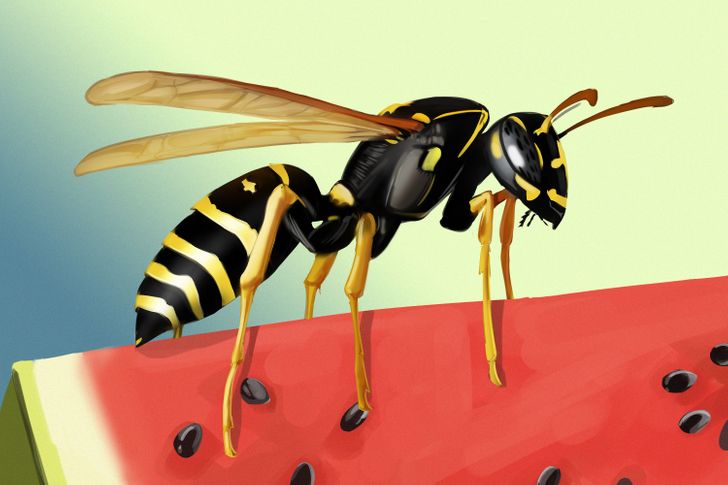
- Thanks to their long legs and the more elongated shape of their abdominal area, wasps often appear much slimmer and thinner than bees. Moreover, they have a smoother body and a well-defined “waist,” separating the head and chest from the lower part of the body.
The black and yellow coloration of a wasp may appear brighter due to the apparent lack of hair on its body.
Wasps are much more aggressive than bees and bumblebees. They can attack several times with the help of their smooth stinger, persistently pursuing their goal (for example, trying to get to the sweet food).
Nests
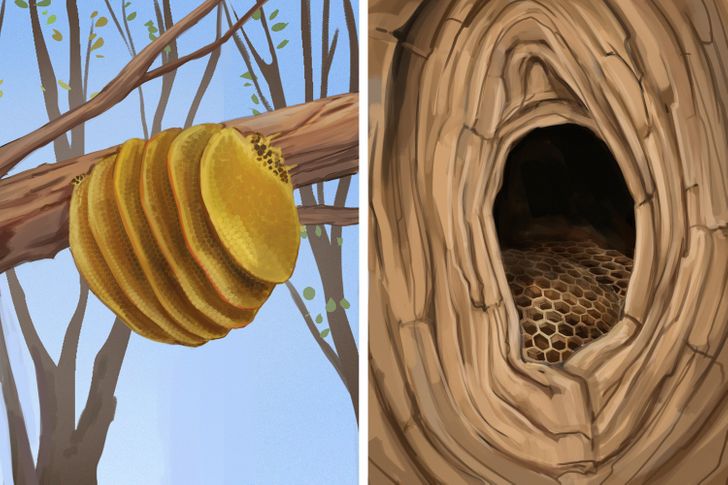
- Bees are able to create wax using special glands on their body and they use this to create honeycomb. In the combs, bees not only store honey but also pollen, as well as raise their offspring. In warm climates, bees are able to create hives outdoors. At lower temperatures, these insects prefer to make nests inside shelters — for example, in the hollows of old trees.
There are also species of solitary bees that don’t build hives at all.
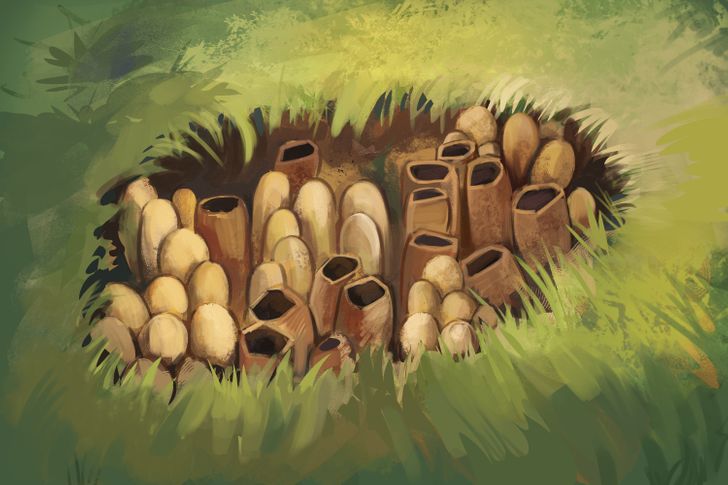
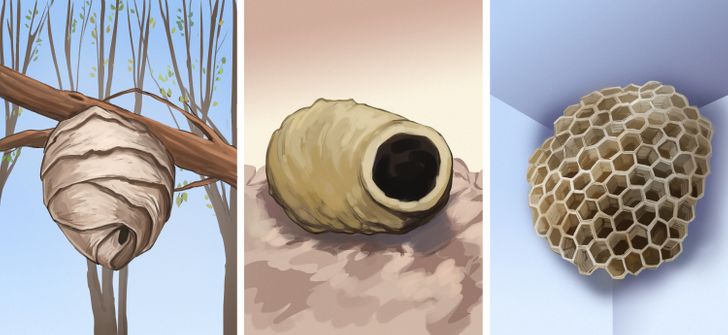
- Depending on the type of wasp, their nests can have different shapes and structures. Some build paper nests by recycling wood and mixing it with their saliva. Others create tube-like nests using clay or mud. And other species can dig burrows in the ground and settle there.
Wasp nests can reach enormous sizes, so it is better to stay away from the dwellings of these insects.
Nutrition
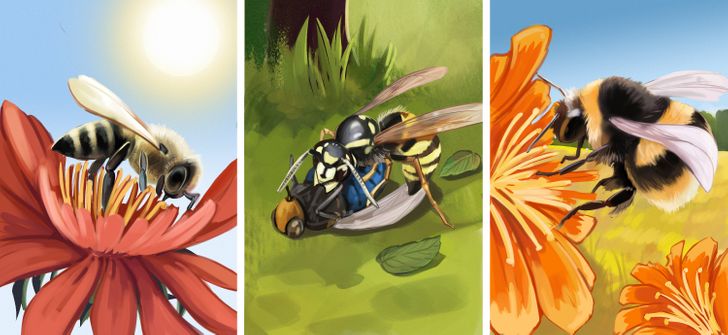
Bees and bumblebees are pollinating insects, as they feed only on flower nectar and nothing else. Wasps can be called omnivores. They can hunt smaller insects just like predators, consume the remains of someone else’s prey like scavengers, and eat different types of sweet foods (fruit, candy, soda, etc.).
What is a hornet?
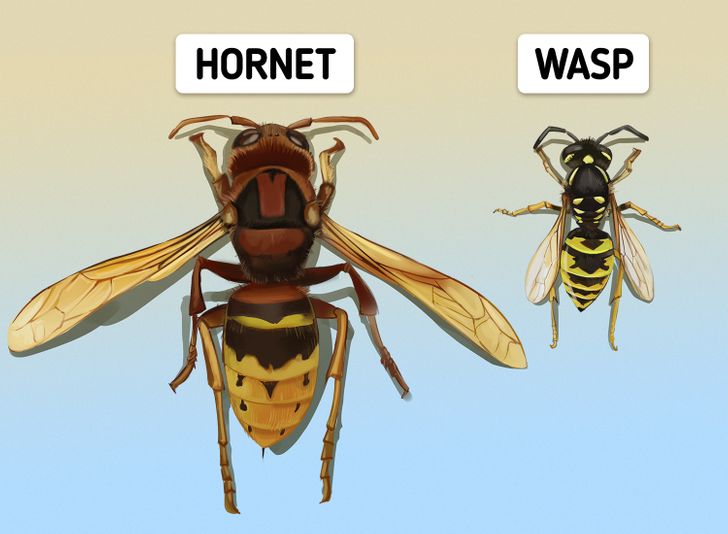
Bonus: Yellow insects with dark stripes that may or may not be dangerous
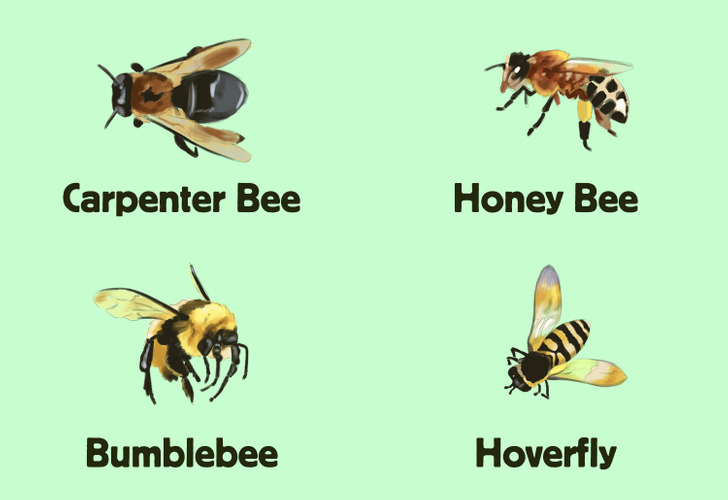
- Carpenter bees are usually black with some yellow or white pubescence. People often confuse them with bumblebees. Carpenter bees are not dangerous, and only females have stingers, but they are not aggressive and rarely sting unless caught in the hands or otherwise directly provoked.
- Honey bees are domesticated insects that are used as pollinators and honey producers. They’re friendly and don’t attack without being provoked, and they usually can sting only once.
- Bumblebees are also an important agricultural pollinator. Females can sting repeatedly, but generally, they ignore humans and other animals.
- Hoverflies mimic stinging wasps and bees to ward off predators, but to most mammals, they’re harmless.
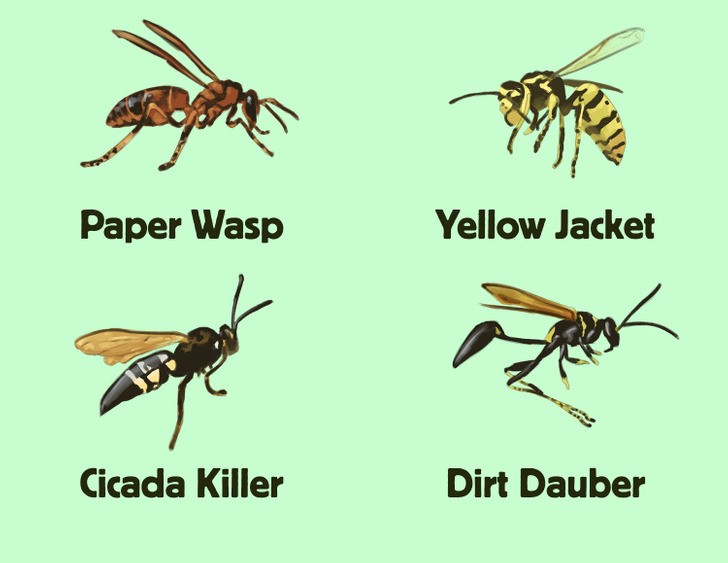
- Paper wasps are beneficial in their natural habitat, they are known as pollinators among gardeners, and might attack only if they themselves or their nests are threatened.
- Yellow jackets are important predators of pest insects, and females are capable of stinging — their venom can be dangerous to only humans who are allergic or that are stung many times.
- Cicada killers look like large wasps and hunts cicadas. Those insects are very different in their behavior but don’t sting unless they are grasped roughly, stepped upon with bare feet, or caught in clothing.
- Dirt daubers build nests in the ground and are not usually aggressive, but they can become belligerent when threatened. Stings are uncommon.